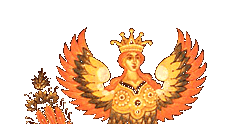Ivan Shishkin is to art as Robert Frost is to poetry. Both were great lovers of nature and it's processes. They captured nature in their respective mediums like no others before them or after. In 1832 Ivan Shishkin was born into a very affluent merchant family. He grew up in the town of Elaburg where he was able to soak in the dense forests of the Ural mountain range and the tremendous waterways like the Volga. This had a lasting effect on him that he conveyed through drawing and painting in his younger years. When he turned 21 in 1853 he started painting seriously and was accepted into Moscow's School of Painting and Sculpture. Then in 1856 he transferred to St. Petersburg's Academy of Arts. In these two schools he studied under the tutelage of Rabus, Mokritsky, and Vorobyov. While at the academy in Petersburg he won practically every award the faculty had to offer. He also won a grant to study all over Europe for three years. He traveled to Germany, Switzerland, Czechoslovakia, France, Belgium and Holland. While abroad he grew increasingly irritated with his instructors and was happy to come back to Russia. But his development as a multi-faceted artist took place during his travels, and his experimentation with lithography and his pen, charcoal, and pencil drawings received great praise from European critics wherever his works appeared. In 1867 his work "View near Dusseldorf" appeared at the World Fair in Paris.
Many of the works he painted that are considered true nationalistic gems were painted upon his return from studying abroad. His ultra-detailed approach to his paintings was the result of having extensive knowledge in the field of botany from which he extracted vital scientific information that he materialized in his paintings. This along with the authentic depiction of nature's purity and rawness gave viewers the character of the Russian landscape as no other artist had ever provided his native land. He painted real places, treating them like studies that he developed into full grown masterpieces. His paintings were by no means miniature and monumentalism came out in some of his works.
The aesthetic of his work was challenged later on by artists like Valentin Serov and Isaac Levitan, who painted the Russian landscape with an entirely new outlook on style. However, his popularity did not fade and his influence on younger painters reigned supreme. Today his artwork still receives international attention even over a hundred years after his death in 1898. He was so dedicated to his painting that when he passed away he was found in his study at his easel. He was working on a work entitled, "Mast-Tree Grove," that is in the possession of the State Tretyakov Gallery in Moscow.
Here is a small listing of his works:
View of Valaam Island. Kukko. (1860)
View near Dusseldorf (1865)
Noon in the Neighborhood of Moscow (1869)
Pine Forest in Viatka Province (1872)
Rye (1878)
Path in a Forest (1880)
Oaks (1887)
Coniferous Forest. Sunny Day. (1895)
Morning in the Pine Forest (1889)
|



